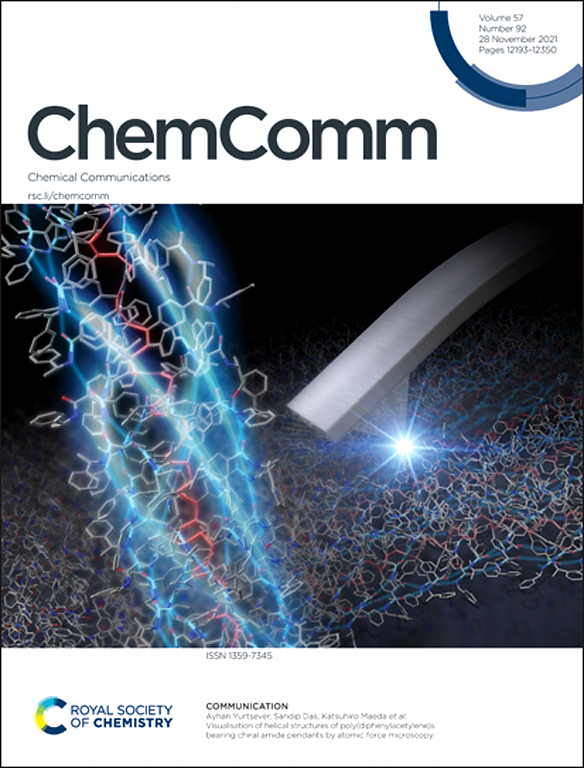空腔形成能量驱动两亲体在气-水界面的聚集
IF 4.2
2区 化学
Q2 CHEMISTRY, MULTIDISCIPLINARY
引用次数: 0
摘要
两亲性是控制自组装、药物传递和膜渗透性的关键特性。我们介绍了一种基于偏振连续体模型的高效方法来量化这一重要性质。我们的模型表明,两亲体在空气-水界面的积累是由水中空腔形成能量的释放驱动的。本文章由计算机程序翻译,如有差异,请以英文原文为准。
Cavity formation energy drives accumulation of amphiphiles at air-water interface
Amphiphilicity is a key property that governs self-assembly, drug delivery and membrane permeability. We introduce a highly efficient approach based on polarisable continuum models to quantify this important property. Our modelling suggests that accumulation of amphiphiles at the air-water interface is driven by the release of cavity formation energy in water.
求助全文
通过发布文献求助,成功后即可免费获取论文全文。
去求助
来源期刊

Chemical Communications
化学-化学综合
CiteScore
8.60
自引率
4.10%
发文量
2705
审稿时长
1.4 months
期刊介绍:
ChemComm (Chemical Communications) is renowned as the fastest publisher of articles providing information on new avenues of research, drawn from all the world''s major areas of chemical research.
 求助内容:
求助内容: 应助结果提醒方式:
应助结果提醒方式:


